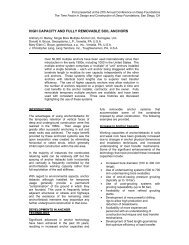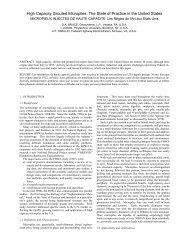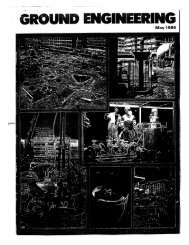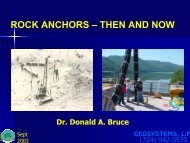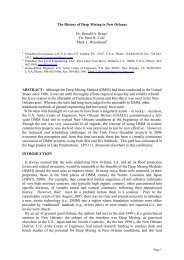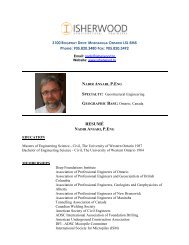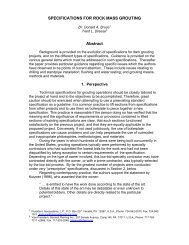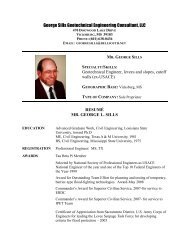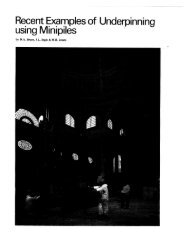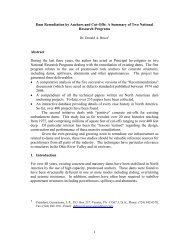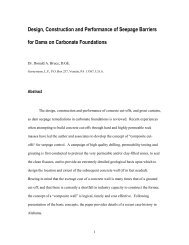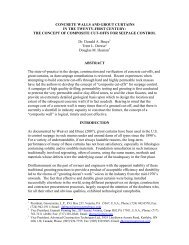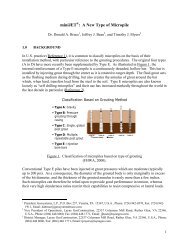SEEPAGE CUT-OFFS FOR LEVEES: A ... - Geosystems, L.P.
SEEPAGE CUT-OFFS FOR LEVEES: A ... - Geosystems, L.P.
SEEPAGE CUT-OFFS FOR LEVEES: A ... - Geosystems, L.P.
You also want an ePaper? Increase the reach of your titles
YUMPU automatically turns print PDFs into web optimized ePapers that Google loves.
placement. (This is not an issue, of course, for CB walls, where there is no separate<br />
bentonite slurry medium to consider.)<br />
• Poor backfilling procedures may result in pockets of trapped slurry and/or segregation<br />
of the backfill.<br />
• Sudden slurry loss into the formation during excavation may occur and can<br />
potentially create an embankment safety situation.<br />
• Clamshell and hydromill operations need substantial working platform preparations<br />
and large access conditions.<br />
Unit Costs<br />
This is extremely difficult to provide guidance on, given the huge range of methods,<br />
materials and project requirements (such as depth and geological conditions). For<br />
example, the backhoe is only used in favorable conditions to moderate depths, whereas<br />
the hydromill is typically called upon for cut-offs of relatively great depth and/or to<br />
penetrate into resistant bedrock conditions. The following table is provided, to be used<br />
with caution and understanding.<br />
CLAMSHELL HYDROMILL BACKHOE<br />
Mob/Demob $100,000-$250,000 $250,000-$500,000 $25,000-$50,000<br />
Unit Cost $30-$100/sf $75-$250/sf $6-$12/sf<br />
Overall Verdict<br />
Category 1 walls have a long and successful history of usage throughout the U.S. They<br />
cover a wide variety of excavation methods and backfill materials and so provide a huge<br />
range of options relating to constructability and performance. They include the cheapest<br />
(Backhoe) and the most expensive (Hydromill) cut-offs which can be built for levee<br />
remedial purposes.<br />
CATEGORY 2 <strong>CUT</strong>-<strong>OFFS</strong> (MIX IN PLACE)<br />
DMM (Conventional Deep Mixing) Method<br />
Background<br />
Although an early variant of DMM was used sporadically in the U.S. from 1954 (the MIP<br />
piling technique), contemporary DMM methods which are used for seepage control date<br />
from Japanese developments by Seiko Kogyo beginning in 1972. It should be noted that<br />
DMM techniques for improving foundation soils for strength and stability purposes had<br />
been developed both in Japan and in Sweden 5 years previously (FHWA 2000, 2001).<br />
Japanese cut-off technology was first introduced into the U.S. in 1986 and was further<br />
developed by U.S. specialists in several projects thereafter, the biggest being Jackson



